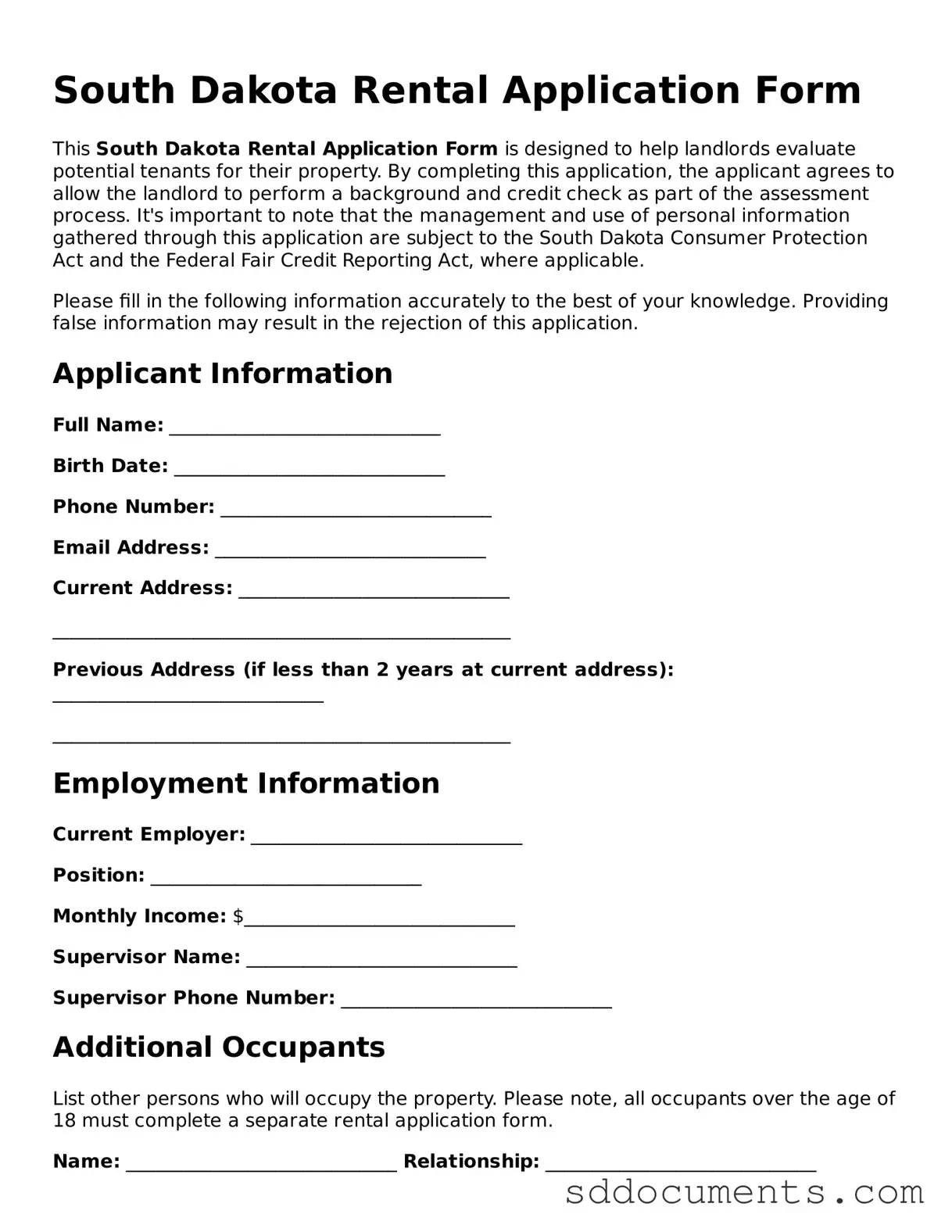Free Rental Application Template for South Dakota
The South Dakota Rental Application form is a document that potential tenants complete to apply for a rental property. This form collects essential information about the applicant, including their rental history, employment details, and references. If you're ready to take the next step in securing your new home, fill out the form by clicking the button below.
Customize Document Online
